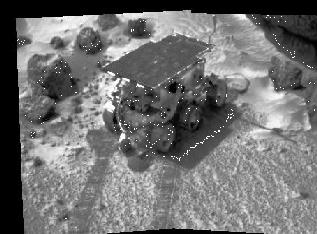This image shows the Rover at work.
Click on image for full size
Image from: JPL/NASA
Soils explored by the Rover
One of the objectives of the Mars Pathfinder mission was the examination of the composition of the soil and how it was laid down. As the Rover traversed the surface exploring the rocks of Mars, it also sampled the soil near those rocks. Soil experiments were performed by spinning the Rover's wheels (mostly the rear wheels). As the wheels dug into the surface, the Rover discovered that much of the ground is made of dust, possibly deposited during many of the Martian Global Dust Storms.
Scientists found three types of soils in the Martian surface near the Pathfinder landing site (+ one special type).
- Dark Soil (dark gray)
- Bright Soil (bright red)
- Disturbed Soil (disturbed by the passage of the Rover & movement of the airbags, & sort of dark-red)
- Lamb-like Soil (just found around the rock "the Lamb")
Everywhere the Rover passed, it disturbed the soil, and the soil underneath turned out to be a darker red-brown soil than it's surroundings, suggesting that parts of the surface of Mars have a top-coat. An example of disturbed soil occured when the Rover crossed the
Mermaid Dune, shown
here. In general, the soils seem to be similar to those soils found at the
Viking landing sites.
You might also be interested in:
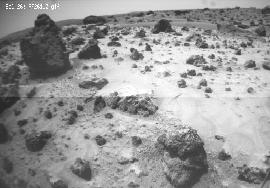
This image shows the rock called Pooh Bear. Soil found near Pooh Bear seemed to be a clumpy kind; finely grained, cloddy, and rocky. This was different from the soils found near the rock Scooby Doo, which
...more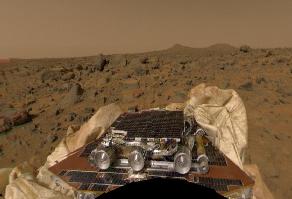
The goal of the Mars Pathfinder (MPF) mission was to analyze the rocks and soil of Mars. The MPF was actually 2 parts, a lander and a rover. The lander stayed right where it landed while the rover named
...more
The Mars Pathfinder was launched in December 1996 on a Delta II rocket. The spacecraft entered the atmosphere on July 4th, 1997, where a heat shield, parachutes, and airbags helped it land. After impact
...more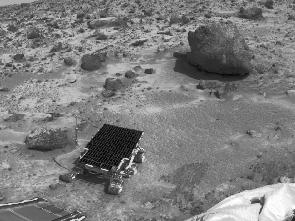
These are the findings of Mars Pathfinder. Rounded Pebbles, Cobbles and possible Conglomerates were found - a result from analysis of the landing site, the rocks, and the soils. showed that there were
...more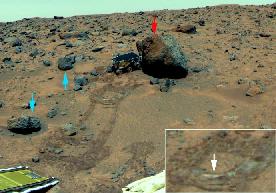
Even though the rocks seem to be much the same, scientists can see three basic differences in these rocks. These differences help them figure out more about weathering processes on Mars and where the soils
...more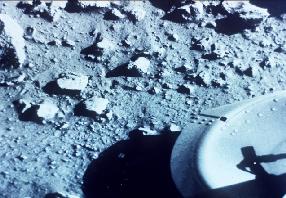
The Viking I and Viking 2 missions were designed to both orbit Mars and land and make exploratory observations on the planet's surface. At this stage in the history of the exploration of Mars, scientists
...more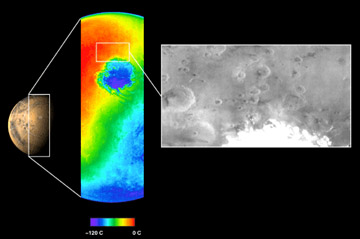
The Mars Odyssey was launched April 7, 2001, from Florida. After a six-month, 285 million-mile journey, the Odyssey arrived at Mars on October 24, 2001. The Odyssey is in its aerobraking phase right now.
...more


